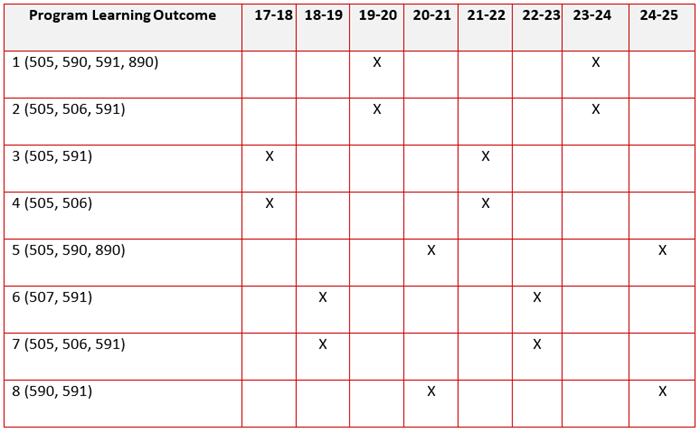LIS Program Data
- Retention rate: One year retention for LIS who entered in Fall 2016 is 76.9%
- Average time to degree completion: LIS students who graduated in the most recent 4 quarters – Winter 2017-Fall 2018 – is 2.75 years
- Percentage of graduates holding positions relevant to the degree within 12 months of degree completion (may include further graduate study): For students who completed a LIS degree in the 2017-18 AY, 60% responded to post graduation surveys and 90% report full-time employment one-year after graduation
LIS Program Assessment
The College of Computing & Informatics is a member of the Association for Library and Information Science Education (ALISE). In 2017, the American Library Association reaccredited the Drexel LIS graduate major program with "continuous accreditation" status until 2025. Systematic planning and program learning assessment are an integral part of our program’s ongoing efforts. As explained in our 2017 ALA Accreditation Program Self-Study, we conduct systematic data gathering from our constituencies including students, faculty, alumni, employers and administrators.
The MS in Information LIS Program Learning Objectives are fundamental to our ongoing assessment efforts.
MS in Information LIS program student learning achievement is assessed on a four-year evaluation cycle that ties the MSLIS program outcomes to the ALA competencies and to the core course assignments. The current four-year evaluation cycle began with the fall of academic year 2017/2018, when a new degree program revision was implemented, as described in the 2017 ALA Accreditation Program Self-Study. The program assessment cycle is shown in Table 1.
Table 1: Data collection cycle for MSLIS program learning outcomes assessment.

Program learning outcomes #3 and #4 were evaluated during AY2017/2018, as per the assessment review cycle:
- Program learning outcome #3: Analyze and apply information policies and information-related laws (including the standards and guidelines of pertinent professional organizations) that advance the creative and ethical applications of information technologies and the delivery of information resources throughout society.
- Program learning outcome #4: Foster the core values of the profession (e.g., access, equity, intellectual freedom, privacy, social justice) in all programs and services offered in these communities.
These two outcomes are addressed in three of the LIS core courses: INFO505: Information Professions and Professionals, INFO506: Users, Services, & Resources, and INFO591: Data and Digital Stewardship. For each course, we matched assignments to course-level learning objectives and collected anonymized students’ grade data for each assignment.
In the MSLIS grading scale, B or above is a satisfactory grade, and A or above is an excellent grade. For our collected data on INFO505, 4% of students received a grade lower than B and 96% received B or higher grades, with 78% receiving A or higher grades. Figure 1 shows the learning objective (LO) level grade distribution.

Figure 1: Learning objectives fulfilled by students in INFO505.
Thus, all students met LO4, 96% met LO1, 89% met LO2, and 78% met LO3. As performance for LO4 was below the desired benchmark of 80% percent student attainment of at least a grade of B, the course coordinator will revise the related course content and delivery methods with the goal of raising student achievement for the next evaluation cycle.
For our collected data on INFO506, all students received B or higher grades, with 83% receiving an A or higher. Figure 2 shows the learning objective (LO) level grade distribution for assignments from this course.

Figure 2: Learning objectives fulfilled by students in INFO506.
Thus, all students met LO2, LO3, and LO4; 87% met LO1 and LO5. These results exceed the desired 80% student achievement benchmark.
For our collected data on INFO591, all students received B or higher grades, with 58% receiving A or higher grades. Figure 3 shows the learning objective (LO) level grade distribution for assignments from this course.

Figure 3: Learning objectives fulfilled by students in INFO591.
Thus, all students in this course met LO2, LO3, and LO4; 96% met LO1. These results also indicate student achievement beyond the 80% benchmark success rate.
As such, our systematic program assessment to this point indicates that our learning objective benchmark of at least 80% of students’ receiving at least a B or higher was surpassed for examined program learning objectives, with the exception of learning objective #3 for INFO505. Systematic assessment continues with the next year of the assessment cycle, AY2018/2019.